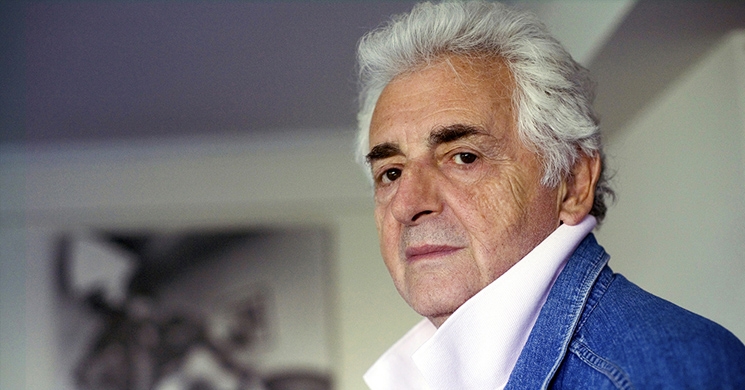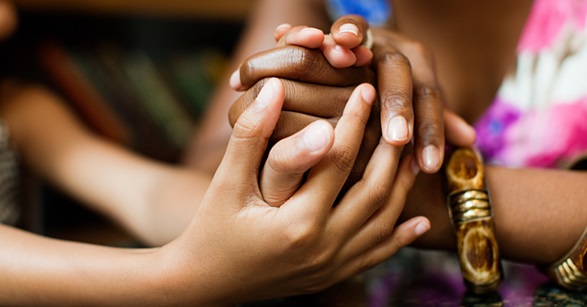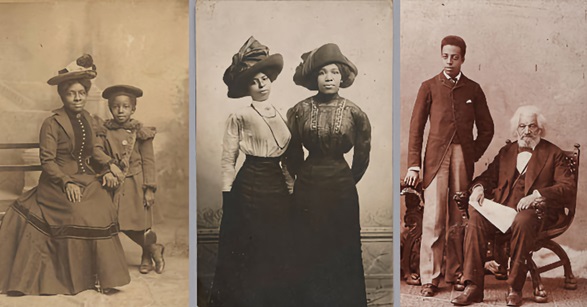Famed photographer Harry Benson’s career has allowed him to capture countless historic moments, from the civil rights marches of the 1960s to the aftermath of September 11 to the devastation of Hurricane Katrina.
Through these and many other extraordinary experiences behind the lens, Harry learned to always keep his camera close — understanding, both as a matter of intuition and practice — that "a good picture cannot be repeated.”
As part of an event celebrating his Infinity Award for Lifetime Achievement from the International Center of Photography and the release of a documentary about his work titled “Harry Benson: Shoot First,” we sat down with Harry to talk about his celebrated career, his most memorable moments and what it means to get to the center of a story.
People like the idea that someone's paying attention to them... Nobody wants to pass this way unnoticed.
Was it a conscious decision to work in photojournalism, portraiture and even fashion instead of specializing in one area?
I like pictures that are moments — something that could never happen again. To get to the center of a story… that is what you're looking for.
Money was never my motivator; getting good pictures was. If I wanted to go down that road, fashion would have been a much more lucrative choice, but I'd rather do everything. I didn't pick and choose between assignments based on anything other than whether I wanted to do it, because you don't really know what’s there until you get there. Even if you do get a good picture, it might be years before you think, 'Hey, that wasn't so bad.' Pictures often take on a whole new meaning and significance years later — the important part is that you’re there to capture it.
Your photograph of the Beatles launching into a spontaneous hotel room pillow fight is one of your most iconic images. What can you tell us about that experience?
The Beatles were interesting. What began as a music story changed into a news story: They became a phenomenon. Everything changed while I was with the Beatles in America — for the band and for me. When I finished photographing the Beatles, I went on to other assignments including the civil rights march with Dr. Martin Luther King, Jr. It was a time of deep change in America.
When discussing shooting difficult photos, you say you were able to leave your emotions behind. Why is this important?
I think, ‘Please God. Don't let me fail today. Let me fail tomorrow. This is it. This is why I came into the business, to be present at times like these.’
For example, I was next to Bobby Kennedy when he was shot. As much as I liked him as a candidate — I even campaigned for him — that was one night that I couldn't fail. It was a tough experience, but it was so significant. A couple of photographers who were there walked away, but I didn’t. This was a stop sign in my career; this moment had to be captured. I had a job to do: I was there to record and cover, and that's how I feel about a lot of my photos.
Can you ever really prepare yourself to photograph something so traumatic?
I had a feeling that I was going to run into something like this in my life. You know, odds are that something awful is going to happen, and your camera has got to be ready because a great photograph is a moment that's gone forever.
You’ve photographed hundreds of famous faces — from politicians to pop stars. How do you get your subjects to feel at ease and trust you during your time together?
You've got to respect them. I don't get overawed, either, though. That’s not to say I'm disrespectful, but I don't read too much about someone before I photograph them because knowing who somebody is can make you nervous.
You've got one big advantage: People like the idea that someone's paying attention to them. They realize that being photographed isn't bad for them — nobody wants to pass this way unnoticed.
Growing up during the war and seeing photos of these great people like Churchill and Roosevelt, I’d often think: “Wouldn't it be wonderful to be there at that time?” I'm very lucky that my career allowed me to capture many historic moments, to be there. Of course, I was closer to some than others. When I was with Life magazine, President Nixon allowed me into San Clemente just a few days before he resigned. I often wonder why, and I imagine he wanted it recorded for history.
How do you make sure your subjects don’t get too close?
When I photograph people, I avoid becoming friends with them. I have a good reason for that: I don't want my subject feeling comfortable enough with me to say, 'Oh, Harry, don't use that photo of me.'
You're looking for distance. But at the same time, I'm going for the center.
What does “going for the center” mean to you?
One example was to stay near when Bobby (Kennedy) got shot. I didn't go after the assassin, although I saw him to my left. You’re looking for a photograph that nobody's ever seen before, and that's what makes it interesting.
Sometimes, you find the center just after you say, ‘That's enough,’ and then — bang! — it changes. You often get to the center in the last 10 minutes of a 30-hour day, and it often happens that the last few shots of the day are the best ones.
What work are you most proud of?
Actually, I'm most proud of my daughters — what they have accomplished and that they speak well. This is an achievement in life, to be able to speak well.
I'm also proud that I was able to get as far as I did professionally. I had to leave school at 13 — Scottish education was very hard in those days — and I was left with a lack of confidence. The camera provided that back to me. So I'm very proud of the work I did with my camera, and today I’ve got three honorary doctorates.
What advice do you have for a young photographer just starting out?
You’ve got to get a good picture every day, and you've got to learn that you’re only as good as your last assignment.
It's easier now with digital photography for anyone to be a photographer, but if you want to succeed, it's really up to you to figure what's interesting. There's nobody really helping you out with that. You're on your own.
Working at the London Daily Express early in my career was great training for me. It was very competitive, which I enjoyed because you see what you've done right away in the paper. During my time there, it was clear: If I take a better picture than the other guy, I could succeed.
Your work has taken you all over the world. How did you strike a balance and learn to embrace the give-and-take of your career?
Honestly, you miss a lot: You miss Christmases, you miss out on time with your wife and children because you're following a story. Sometimes you have to accept that you lose more than you win. But really, at the end of the day, my life has been following a camera.




